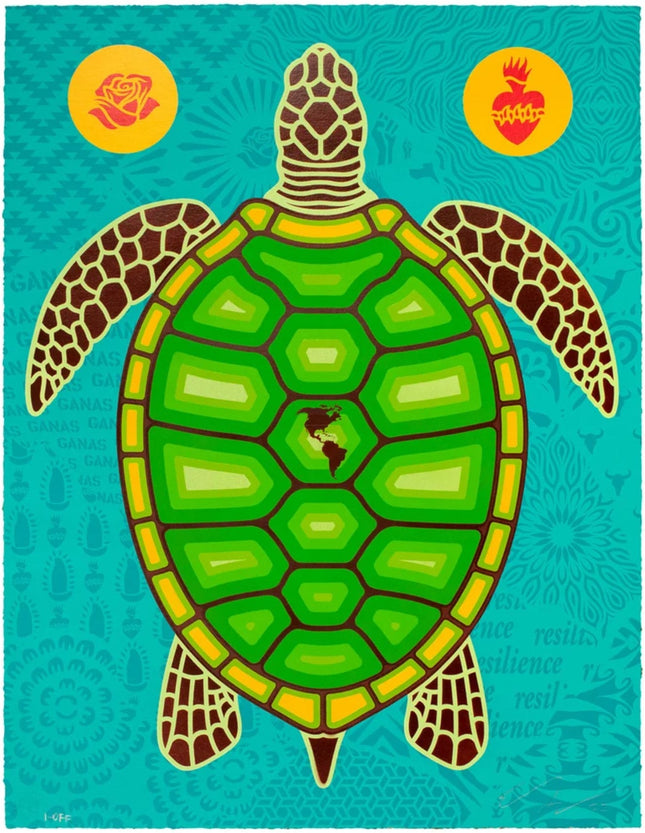
Flowers & Plants
-

Ernesto Yerena Montejano- Hecho Con Ganas Turtle Island Ganas Collage Stencil Original Painting by Ernesto Yerena Montejano- Hecho Con Ganas
Turtle Island Ganas Collage Original One of a Kind Sprayed Paint Stencil Painting Artwork on Cotton Rag Art Paper by Street Art Pop Culture Artist Ernesto Yerena Montejano- Hecho Con Ganas. 2022 Signed Original Spray Paint Painting Size 20.5"x26.5" Hand Spray Painted Stencils on 100% Cotton Rag Paper Hand Deckled Edges Signed and Numbered by Ernesto Yerena Montejano 1-Off The Artistic Expression of "Turtle Island Ganas Collage" by Ernesto Yerena Montejano Ernesto Yerena Montejano is an artist deeply rooted in the cultural crossroads of street pop art and graffiti artwork. His piece, "Turtle Island Ganas Collage," is a vibrant celebration of cultural identity, resilience, and the spirit of resistance. This original one-of-a-kind sprayed paint stencil painting on cotton rag art paper encapsulates the ethos of Montejano's artistic vision—Hecho Con Ganas, or "made with effort and desire." Signed by the artist, this 20.5"x 26.5" artwork reflects Montejano's commitment to creating pieces that are not only visually captivating but also imbued with social and political commentary. Symbolism and Technique in Montejano's Work In "Turtle Island Ganas Collage," Montejano employs the turtle, a creature revered in many indigenous cultures for carrying the world on its back, as a central figure symbolizing the earth and the interconnectedness of life. The term "Turtle Island" is a name for the North American continent used by several Native American tribes, and its inclusion in the title ties the piece to themes of heritage and land. Montejano's choice of materials—100% cotton rag paper with hand-deckled edges—complements the organic subject matter, grounding the piece in tradition and craftsmanship. The hand-sprayed stencils create a sharp contrast characteristic of graffiti art, while the intricate details and layering echo the complexities of pop art imagery. Ernesto Yerena Montejano's Contribution to Street Pop Art Montejano, a Mexican-American artist, contributes to the rich tapestry of street pop art through works like "Turtle Island Ganas Collage," which speak to identity, community, and activism issues. His work often reflects the experiences of the borderlands between the United States and Mexico, serving as a visual commentary on the socio-political landscape. By integrating motifs from indigenous and Chicano culture, Montejano bridges the past with the present, creating a dialogue between historical narratives and contemporary issues. His artwork transcends the traditional boundaries of street art, offering a narrative that is both universal and deeply personal. Through his art, Montejano invites viewers to engage in broader conversations about social justice, heritage, and the human condition, solidifying his place in the pantheon of street pop art and graffiti artists.
$1,059.00 $900.00


